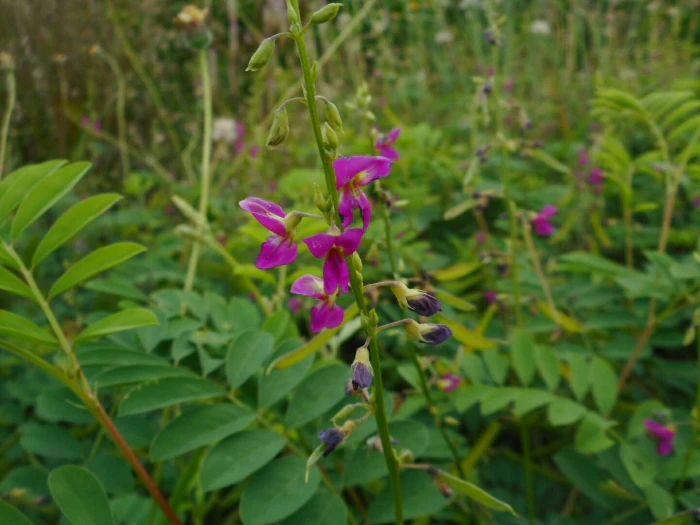Wild Indigo
(Tephrosia purpurea)
Wild Indigo (Tephrosia purpurea)
/
/

© Eugene Popov
CC BY 4.0
Image By:
© Eugene Popov
Recorded By:
Copyright:
CC BY 4.0
Copyright Notice:
Photo by: © Eugene Popov | License Type: CC BY 4.0 | License URL: http://creativecommons.org/licenses/by/4.0/ | Uploader: epopov | Publisher: iNaturalist |























Estimated Native Range
Climate Requirements for Shoreline, Washington
| This Plant | Your Site | Plant Suitability for Your Location | ||
|---|---|---|---|---|
| • Precipitation | 0" - 199" | 41" | Aquatic | Aquatic |
| • High Temp. | 66°F - 112°F | 74°F | Your summer temperatures are normal for this plant. | Excellent |
| • Low Temp. | 9°F - 79°F | 35°F | Your winter temperatures are normal for this plant | Excellent |
This plant may not grow well at your location - your precipitation is too high.
Summary
Tephrosia purpurea, commonly known as Wild Indigo or Purple Tephrosia, is a perennial herb native to tropical and subtropical regions across Africa, Asia, and Australasia. It thrives in a variety of habitats such as open woodlands, grasslands, and along roadsides, often in poor and disturbed soils. The plant typically grows up to 7 feet tall and features compound leaves with leaflets that are oblong or lance-shaped, often with a trowel-like appearance and serrated margins. Purple Tephrosia blooms with pink to purple flowers, which are less showy and appear in elongated clusters during the warm season.
Wild Indigo is valued for its nitrogen-fixing ability, which enriches the soil, making it a useful green manure in agricultural practices. It is also employed in traditional medicine for its purported therapeutic properties, including the treatment of leprosy and ulcers. In cultivation, it requires minimal care, tolerating drought and poor soil conditions, and prefers full sun to partial shade. However, it can be potentially invasive outside its native range due to its robust growth and ability to self-seed. Gardeners should be cautious and check local regulations before planting.CC BY-SA 4.0
Wild Indigo is valued for its nitrogen-fixing ability, which enriches the soil, making it a useful green manure in agricultural practices. It is also employed in traditional medicine for its purported therapeutic properties, including the treatment of leprosy and ulcers. In cultivation, it requires minimal care, tolerating drought and poor soil conditions, and prefers full sun to partial shade. However, it can be potentially invasive outside its native range due to its robust growth and ability to self-seed. Gardeners should be cautious and check local regulations before planting.CC BY-SA 4.0
Plant Description
- Plant Type: Shrubs
- Height: 1-3 feet
- Width: 1-2 feet
- Growth Rate: Moderate
- Flower Color: Pink, White
- Flowering Season: Summer
- Leaf Retention: Deciduous
Growth Requirements
- Sun: Full Sun
- Water: Low
- Drainage: Fast
Common Uses
Butterfly Garden, Drought Tolerant, Low Maintenance, Showy Flowers
Natural Habitat
Native to tropical and subtropical regions, including open woodlands, grasslands, and disturbed areas
Other Names
Common Names: Wild Indigo , Fish Poison Plant , Purple Tephrosia , Tefrósia
Scientific Names: Tephrosia purpurea , Cracca purpurea , Galega lancaefolia , Galega lanceaefolia , Galega purpurea , Tephrosia diffusa , Tephrosia hamiltonii , Tephrosia lanceaefolia , Tephrosia laurentii , Tephrosia purpurea subsp. diffusa
GBIF Accepted Name: Tephrosia purpurea